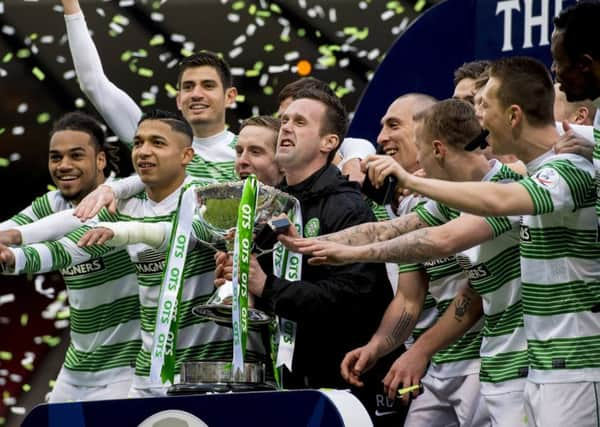Stephen Halliday: Cup revamp a timely intervention


A makeover might be considered inappropriate for most 70-year-olds. But, as the Scottish League Cup approaches its eighth decade of existence, its latest fresh look is more than timely.
The tournament which was born of necessity in the Second World War, when its immediate precursor, the Southern League Cup, was introduced to fill a gap in the fixture calendar, has maintained a resilient presence ever since.
Advertisement
Hide AdAdvertisement
Hide AdIts popularity may have fluctuated through the years, with reports of its possible demise surfacing on a fairly regular basis, but it has retained its relevance through a capacity to produce some of Scottish football’s most dramatic and memorable moments.
When it was orphaned by the disappearance of the Scottish Football League two years ago, the League Cup perhaps seemed to be at its most vulnerable.
But its new guardians have now proved they see a lot of life left in the competition. The changes in format unveiled yesterday by the Scottish Professional Football League are certainly more than just cosmetic.
Like the famous three-handled trophy itself, the League Cup has always been just a little bit different. So it perhaps offers the ideal platform for Scottish football to dip its toes into a move towards summer football.
From next July, the first round group stage will be introduced on a seeded basis with one Premiership team in each of the eight sections of five clubs.
It is intended that the round-robin format, with teams playing each other once in a system similar to that used in the Uefa Cup group stage from 2004-2008, will increase spectator interest and revenues from the early phase which will be concluded by the end of July.
It will take place at the same time Scotland’s four European competition representatives, who will not join the League Cup until the knockout rounds, are playing in Champions League and Europa League qualifiers.
The SPFL also plan to bring a regionalised element to the League Cup groups, where possible, in order to avoid lengthy trips, such as from Annan to Elgin. It also offers the potential for attractive early-season derby fixtures – for example, if Raith Rovers and Dunfermline were paired in the same group.
Advertisement
Hide AdAdvertisement
Hide AdIn a bid to ensure as many of the 80 group games as possible carry competitive significance, the SPFL has also introduced a bonus-point system for drawn matches in which a penalty shoot-out after the 90 minutes will determine the extra point.
It is not quite the “first in world football” suggested by the SPFL press release – bonus point penalty shoot-outs were used in the Japanese J-League from 1995 to 1999.
But it is certainly indicative of a commitment to innovation as they seek to enhance interest in the League Cup.
Of course, it is also not the first time the tournament has featured a group stage.
When first introduced in 1946, following the wartime success of the Southern League Cup, it kicked off with eight round-robin groups from which the winners progressed to the quarter-finals.
It was the traditional curtain-raiser to the Scottish season until 1977 when, two years after league reconstruction brought us the Premier Division in which clubs faced each other four times a season for the first time, the groups were scrapped.
They reappeared in 1981-82 but lasted only another two seasons. Ever since 1984-85, the League Cup has featured a straight knock-out formula from the first round to the final.
It has continued to defy its many critics ever since, even after the SPL wilfully diminished its status by removing a European qualification place for the winners.
Advertisement
Hide AdAdvertisement
Hide AdThat failed to lessen the euphoria of players and supporters alike at a trophy-winning day out, such as has been experienced so memorably by followers of Aberdeen, St Mirren and Kilmarnock in three of the last four finals.
But in response to fresh strains placed on scheduling by the ever-expanding international calendar, which will be added to by Uefa’s new Nations League competition in 2018, the time is ripe for the League Cup’s most radical shake-up yet.
It is a nod in the direction of those who would like to see Scottish football migrate towards summer football and also meets the wishes of the bigger clubs who have been calling for the restoration of a winter break which will return in January 2017.
The SPFL board, who rubber-stamped the new format after studying the findings of a working party, also hope the League Cup will now prove more attractive to potential sponsors.
The four-year broadcast deal with BT Sport, who will screen 13 live games a season, is worth around £8 million and provides immediate added value to the clubs.
The public response to next July’s new group stage will be monitored closely.
Like any makeover, the real measure of its beauty will be in the eye of the beholder.